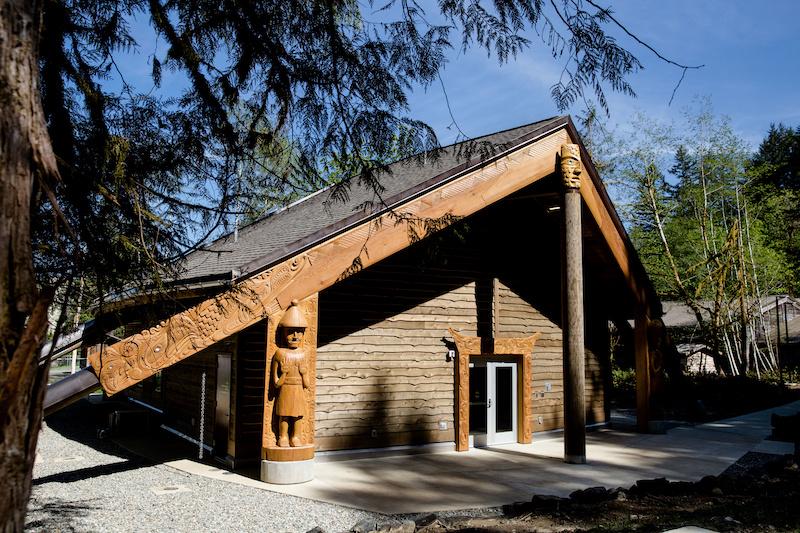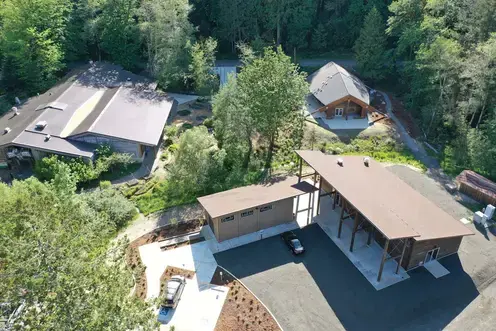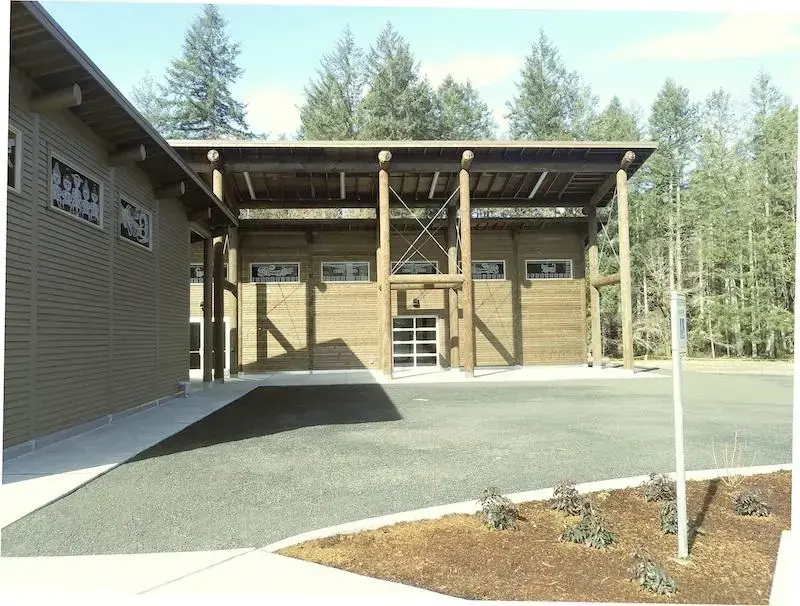Reclaiming Space for Indigenous Arts for Future Generations
The House of Welcome has built a one-of-a-kind Indigenous Arts Campus where the art-making facilities and master plan are based on Indigenous architectural design and cultural concepts surrounded by a 7.25 acre landscape. Choctaw architect Johnpaul Jones, who designed the House of Welcome, worked with staff to develop the master plan for the Indigenous Arts Campus in 2014. Evergreen’s Board of Trustees incorporated the Indigenous Arts Campus master plan into the college’s overall master plan in June 2014. Rolluda Architects completed the design and oversaw the building's completion by Construct Inc.
The Indigenous Arts Campus draws established artists who bring their artistic excellence, international networks and unique cultural experiences. In these facilities, artists are able to work in media not readily available to them at home, while being mentored by other master artists from around the world. Additionally, students can take classes for college credit in the studios.
Our Indigenous Arts Campus
Visit Evergreen's House of Welcome, Carving and Fiber Arts Studios.
Carving Studio
The 2,000 square foot carving studio opened in 2019 with support from Margaret A Cargill Philanthropies, the Hugh and Jane Ferguson Foundation, the Lucky Eagle Casino and numerous individual donors. The studio can accommodate academic instruction and tribal focused residencies. The original 800 square foot carving studio was repurposed as the Indigenous 2-D Design Studio where sculptors design projects before carving in the larger space. The area encompassing both studios is known as Pay3q’ali ("A Place to Carve”), a Twana name gifted by Skokomish spiritual leader and alumnus, sm3tcoom Delbert Miller.
Fiber Arts Studio
Conceptually designed by lead artist Lyonel Grant of Māori: Ngāti Pikiao, Ngāti Rangiwewehi, Te Arawa, the Fiber Arts Studio pays architectural, cultural and artistic tribute to the House of Welcome’s relationships with Māori artists and arts organizations in New Zealand. In 2018, the Fiber Arts Studio was named “Paimārire”, which signifies peace and serenity in Te Reo Māori (Māori language), during an international opening ceremony attended by delegates from New Zealand, Canada and across the United States.


